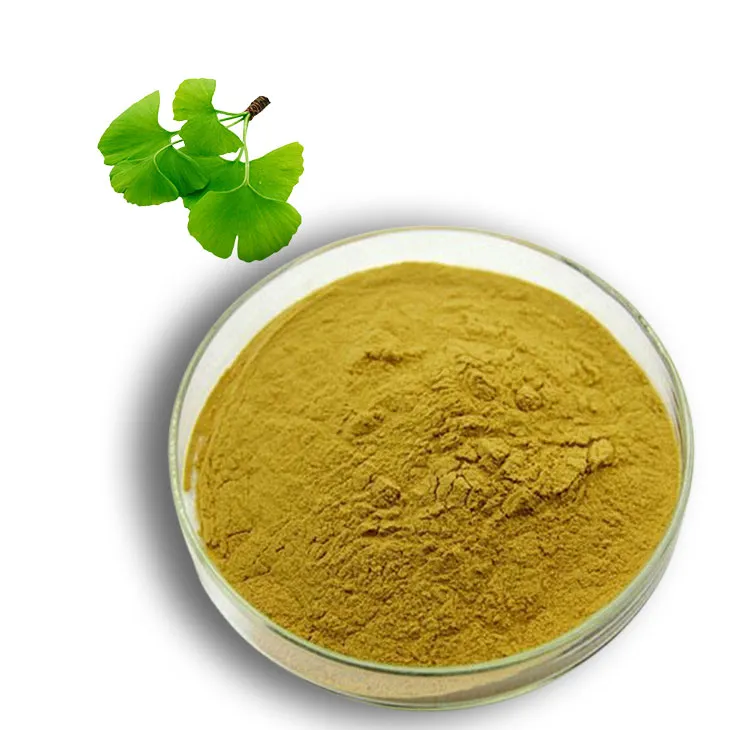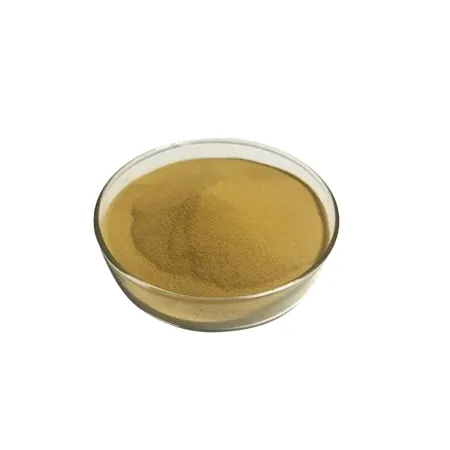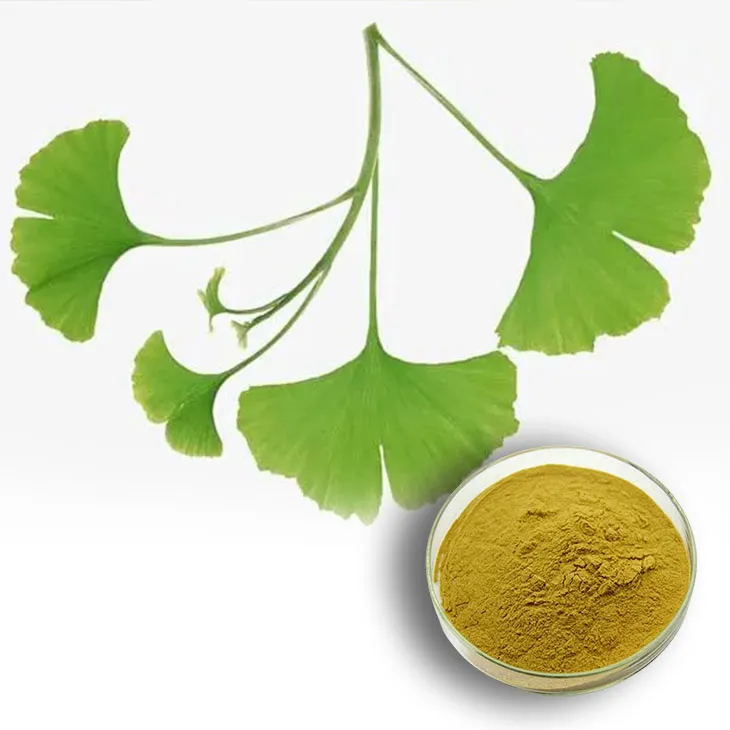- 0086-571-85302990
- sales@greenskybio.com
The process of extracting ginkgo flavonoids from ginkgo biloba extract.
2024-11-27

1. Introduction
Ginkgo biloba is a remarkable plant that has been the focus of extensive research due to its numerous beneficial components. Ginkgo flavone, in particular, has attracted significant attention for its potential applications in the fields of nutraceuticals and pharmaceuticals. The extraction of ginkgo flavone from ginkgo biloba leaf extract is a complex but important process that aims to isolate this valuable compound and enhance its purity for various applications.

2. Raw Material Preparation
The first step in the extraction of ginkgo flavone is the careful raw material preparation.
2.1 Leaf Selection
High - quality ginkgo biloba leaves are crucial for a successful extraction. Leaves are selected based on their maturity, health, and freedom from diseases and pests. Mature leaves are often preferred as they are likely to contain a higher concentration of ginkgo flavone. The selected leaves should also be free from any signs of physical damage or chemical contamination.
2.2 Processing into Extract
Once the leaves are selected, they need to be processed into an extract. This typically involves drying the leaves to reduce their moisture content. Drying can be carried out using various methods such as air drying, oven drying at a low temperature, or freeze - drying. After drying, the leaves are usually ground into a fine powder. This powder can then be further processed using solvents to obtain the initial extract. The extraction process at this stage is often a crude extraction, which may contain not only ginkgo flavone but also other compounds present in the leaves.

3. Solvent Extraction
Solvent extraction is a critical step in the process of isolating ginkgo flavone from the ginkgo biloba leaf extract.
3.1 Choice of Solvents
- There are several solvents that can be used for this purpose. Ethanol is one of the commonly used solvents. It has the advantage of being relatively safe, easily available, and can effectively extract ginkgo flavone. Ethanol - water mixtures are also frequently explored. Different ratios of ethanol to water can be tested to find the optimal extraction conditions.
- Another solvent that has been considered is ethyl acetate. It is a non - polar solvent that can selectively extract certain components, including ginkgo flavone. However, ethyl acetate is more volatile and flammable compared to ethanol, which requires more careful handling.
- Hexane is also a solvent that has been investigated in the context of ginkgo flavone extraction. But it is highly non - polar and may not be as effective in extracting polar components of ginkgo flavone. Usually, hexane is used in combination with other solvents to achieve a more comprehensive extraction.
3.2 Optimization of Extraction Efficiency
- To optimize the extraction efficiency, factors such as solvent concentration, extraction time, and extraction temperature need to be carefully considered.
- Regarding solvent concentration, as mentioned earlier, different ratios of solvents and solvent mixtures can be experimented with. For example, in the case of an ethanol - water mixture, a higher ethanol concentration may be more effective in some cases, but it also depends on the nature of the raw material and the desired purity of the final product.
- Extraction time also plays a crucial role. Longer extraction times may lead to higher yields of ginkgo flavone, but it also increases the risk of extracting unwanted impurities. Therefore, a balance needs to be struck. Typically, extraction times can range from a few hours to several days, depending on the specific extraction method and the equipment used.
- Extraction temperature is another important factor. Higher temperatures can generally increase the solubility of ginkgo flavone in the solvent, thereby potentially increasing the extraction efficiency. However, excessive heat can also cause degradation of the flavone or other components in the extract. As a result, mild to moderate temperatures are usually preferred, such as temperatures in the range of 40 - 60°C for ethanol - based extractions.

4. Purification
After the solvent extraction, the resulting extract contains ginkgo flavone along with other substances. Purification is necessary to isolate ginkgo flavone and enhance its purity.
4.1 Membrane Separation
- Membrane separation is one of the physical - chemical methods that can be used for purification. Ultrafiltration membranes, for example, can be used to separate molecules based on their size. Ginkgo flavone molecules have a specific size range, and by using an appropriate ultrafiltration membrane, larger molecules such as proteins and polysaccharides can be removed from the extract.
- Another type of membrane, the nanofiltration membrane, can be used to further refine the extract. Nanofiltration membranes can separate molecules based on both size and charge. This can be particularly useful for removing small - molecular - weight impurities that may have similar sizes to ginkgo flavone but different charges.
4.2 Other Physical - Chemical Methods
- Column chromatography is another widely used method for purifying ginkgo flavone. In column chromatography, a stationary phase (such as silica gel or an ion - exchange resin) is packed into a column, and the extract is passed through the column. Different components in the extract will interact differently with the stationary phase, allowing for the separation of ginkgo flavone from other compounds. For example, ginkgo flavone may elute at a specific volume of the eluent, while other impurities may elute earlier or later.
- Recrystallization is also a simple yet effective method for purification. By dissolving the extract in a suitable solvent and then slowly evaporating the solvent, ginkgo flavone can be crystallized out. The choice of solvent for recrystallization is crucial. It should be a solvent in which ginkgo flavone is relatively soluble at high temperatures but less soluble at low temperatures. This way, impurities that are more soluble or less soluble than ginkgo flavone can be removed during the recrystallization process.

5. Applications of Ginkgo Flavone
The resulting purified ginkgo flavone has wide - ranging applications in the fields of nutraceuticals and pharmaceuticals, owing to its unique biological activities.
5.1 Nutraceutical Applications
- In the nutraceutical field, ginkgo flavone is often used as a dietary supplement. It is believed to have antioxidant properties, which can help in protecting cells from oxidative damage. Oxidative stress is associated with various health problems, including aging, cardiovascular diseases, and neurodegenerative disorders. By consuming ginkgo flavone - containing supplements, individuals may potentially reduce their risk of these diseases.
- Ginkgo flavone is also thought to have anti - inflammatory effects. Chronic inflammation is another factor that contributes to many health issues. Dietary supplements containing ginkgo flavone may help in reducing inflammation in the body, thereby improving overall health and well - being.
5.2 Pharmaceutical Applications
- In the pharmaceutical industry, ginkgo flavone has been studied for its potential in treating neurodegenerative diseases such as Alzheimer's and Parkinson's. Some research suggests that it may help in improving cognitive function, memory, and motor skills in patients with these diseases. However, more clinical trials are needed to fully understand its efficacy and safety in these applications.
- Ginkgo flavone may also have potential applications in cardiovascular medicine. It has been shown to have effects on blood vessels, such as improving blood flow and reducing blood platelet aggregation. These effects could potentially be used in the treatment of cardiovascular diseases such as hypertension and atherosclerosis.
6. Conclusion
The extraction of ginkgo flavone from ginkgo biloba leaf extract is a multi - step process that involves raw material preparation, solvent extraction, and purification. Each step is crucial in obtaining a high - quality ginkgo flavone product with potential applications in nutraceuticals and pharmaceuticals. As research continues, it is expected that the extraction process will be further optimized, and the applications of ginkgo flavone will be more fully explored.
FAQ:
1. What is the importance of raw material preparation in the extraction of ginkgo flavone from ginkgo biloba leaf extract?
Raw material preparation is fundamental. Carefully selecting the ginkgo biloba leaves and processing them into extract ensures that the starting material has a certain quality. High - quality raw materials can provide a better basis for subsequent extraction steps, influencing the final yield and quality of the extracted ginkgo flavone.
2. How can solvent extraction optimize the extraction efficiency of ginkgo flavone?
Different solvents and their combinations can be used. For example, some solvents may have a better solubility for ginkgo flavone, and by combining solvents, it may be possible to increase the extraction rate. Also, factors such as solvent concentration, extraction time, and extraction temperature related to solvent extraction can be adjusted to find the optimal conditions for maximizing the extraction efficiency of ginkgo flavone.
3. Why is purification necessary after solvent extraction?
After solvent extraction, the obtained product may contain impurities. Purification through membrane separation or other physic - chemical methods is essential to isolate ginkgo flavone and improve its purity. Higher - purity ginkgo flavone is more suitable for applications in nutraceuticals and pharmaceuticals, and it can also ensure the stability and effectiveness of its biological activities.
4. What are the biological activities of ginkgo flavone that make it widely applicable in nutraceuticals and pharmaceuticals?
Ginkgo flavone has antioxidant, anti - inflammatory, and vasodilatory activities, among others. In nutraceuticals, these properties can help in promoting health and preventing diseases. In pharmaceuticals, it can be used as a potential treatment component for various conditions related to oxidative stress, inflammation, and blood circulation problems.
5. Are there any challenges in the process of extracting ginkgo flavone from ginkgo biloba leaf extract?
Yes, there are challenges. For example, finding the most suitable solvent or solvent combination for extraction without causing excessive environmental impact can be difficult. Also, ensuring the purity of the final product during purification steps while maintaining a high yield is a challenge. Additionally, the extraction process needs to be cost - effective to be applicable on an industrial scale.
Related literature
- Optimization of Ginkgo Flavone Extraction from Ginkgo Biloba Leaves"
- "The Chemistry and Bioactivity of Ginkgo Flavones in Ginkgo Biloba Extract"
- "Advanced Techniques for Purifying Ginkgo Flavone from Ginkgo Biloba Leaf Extract"
- ▶ Hesperidin
- ▶ citrus bioflavonoids
- ▶ plant extract
- ▶ lycopene
- ▶ Diosmin
- ▶ Grape seed extract
- ▶ Sea buckthorn Juice Powder
- ▶ Beetroot powder
- ▶ Hops Extract
- ▶ Artichoke Extract
- ▶ Reishi mushroom extract
- ▶ Astaxanthin
- ▶ Green Tea Extract
- ▶ Curcumin Extract
- ▶ Horse Chestnut Extract
- ▶ Other Problems
- ▶ Boswellia Serrata Extract
- ▶ Resveratrol Extract
- ▶ Marigold Extract
- ▶ Grape Leaf Extract
- ▶ blog3
- ▶ blog4
-
How to make powder with peppermint oil?
2024-11-27
-
Organic konjac powder, Australia.
2024-11-27
-
Chinese Cassia Seed Extract Suppliers.
2024-11-27
-
Suppliers of Organic Diosmin Powder.
2024-11-27
-
Hesperidin with the best reviews.
2024-11-27
-
Organic Epimedium Extract Powder Supplier.
2024-11-27
-
Acerola Extract
2024-11-27
-
Europen Bilberry Extract
2024-11-27
-
Boswellia Serrata Extract
2024-11-27
-
Calendula Extract
2024-11-27
-
Natural grape seed extract
2024-11-27
-
Acai Berry Extract
2024-11-27
-
Pine bark Extract Powder
2024-11-27
-
Mangosteen extract powder
2024-11-27
-
Eyebright Extract
2024-11-27
-
Ginseng Root Extract
2024-11-27





















